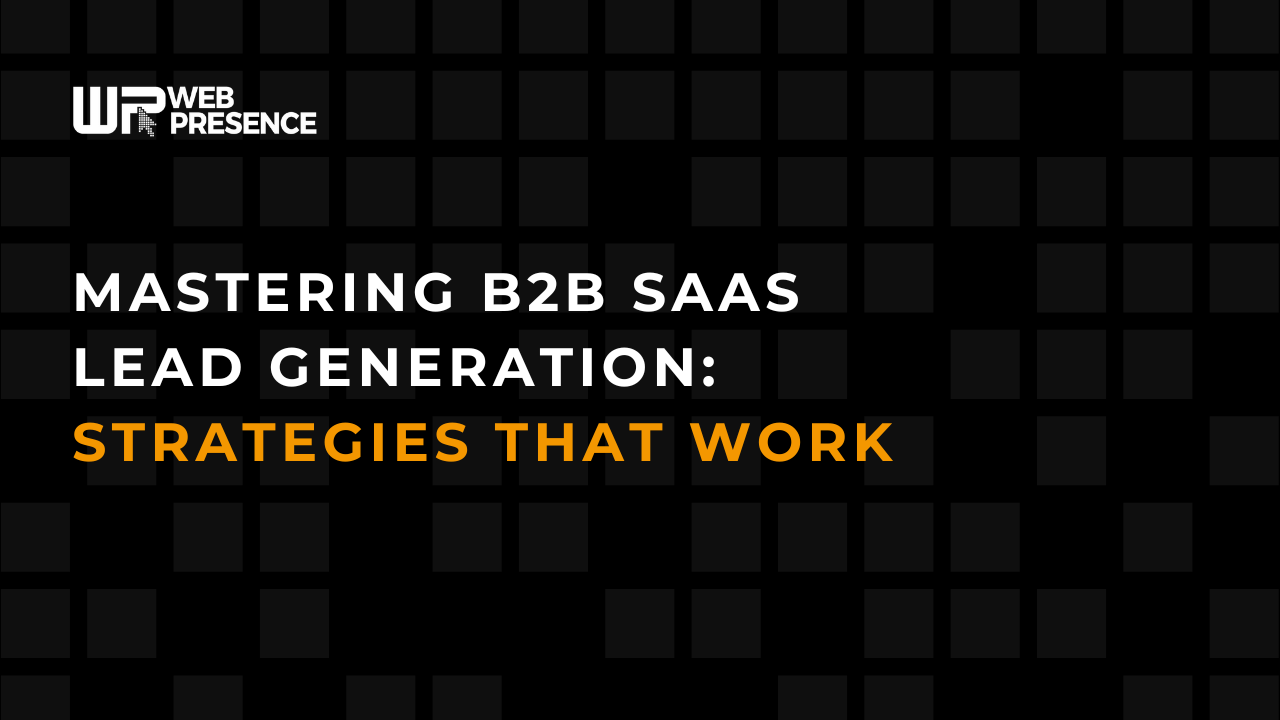Related Articles:
7 B2B SaaS Digital Marketing Strategies To Achieve Success
B2B SaaS Inbound Marketing: Strategies That Convert
Mastering SaaS PPC Advertising: Proven Marketing Strategies
5 SEO Marketing Strategies for B2B SaaS Companies
How do you turn prospects into leads and leads into paying customers? Here’s our guide to seven lead generation strategies that can have the greatest impact on your SaaS business.
What is a lead?
There’s a difference between a lead and a prospect, and that means there’s a difference in the way you engage the two. A prospect is someone who’s right at the top of the sales funnel. They have a (perhaps vague) understanding of who you are and what you do but they’ve shown zero interest or intent in buying from you as yet.
A lead is someone who has engaged with you in some way, perhaps by tapping an ad, reading a blog post or watching a video. The more they engage with you, the more of a qualified lead they become, that is, someone who is — to some extent — likely to buy.
Turning a prospect into a lead, and then turning a lead into a qualified lead, is what lead generation is all about.
The ingredients of lead generation
Boil it down to its most basic steps, and lead generation involves three stages:
- Finding leads
- Nurturing leads
- Converting leads
To reduce the pressure on constantly finding and converting new leads as your business grows, we’d add a fourth important ingredient to that list: retaining customers.
The lead generation challenge for SaaS companies
It takes time to turn a lead into a qualified lead. How much time depends on the product or service you sell, and here’s the challenge with SaaS products: they’re not usually a quick sell.
SaaS products aren’t always easy to reduce to a single USP. Explaining their numerous features and benefits takes time and repeated communications.
Here are some of our favourite (and most reliable) ways to achieve that.
SaaS lead generation strategies that work
Let’s be absolutely clear about this: there are dozens of lead generation strategies that could work for your SaaS product. But no business has time to do it all. So when time and budget are limited, these strategies are likely to deliver biggest bang for their buck quickest.
1. Content marketing
Any marketing has to have a point — you need a reason to contact a prospect or lead. For an impulse buy, sending a voucher, for example, might be all the reason you need.
But SaaS needs more. It needs explanation, insight, data and proof. It (and you) need to build a relationship that tells a lead not just what your product does but, for more importantly, the difference it will make.
You might do that through blog posts, videos, podcasts, reports or a combination of them all.
Content marketing gives your communications a point. Better still, it enables you to build a story over a series of communications. It also enables you to build a relationship — important if you’re wanting the lead to subscribe to your service and stay subscribed.
Even better, by creating content tailored to a specific point in the sales funnel, you can guide them from prospect to customer and then keep producing content that encourages their retention.
We explore content marketing in greater detail here.
2. Social media
Right from the outset of developing your product, social media can be a powerful way of engaging your audience and drip feeding content that shows not only the difference your product can make to them, but also shares a little about your organisation, its people and its culture.
Engage with an influencer who can promote your product to a much larger audience and your social media activities could be the most valuable part of your marketing.
Rather than repeat ourselves, you’ll find loads more about social media engagement strategies for SaaS companies here.
3. Gated content
One of the questions we’re asked most often is once you’ve shared your video or blog post across social media or on the website, how do you encourage people to hand over their contact details so that you can keep nurturing the relationship?
Gated content (that is, requiring someone to give you their email in return for receiving your content) is a good way of doing that, but you need to tread with caution.
Placing content behind a gate suggests it is of real value. If a lead gives you their details and receives content that doesn’t offer something new, or which they could have found elsewhere without handing over personal information, you’ll frustrate rather than inform.
The golden rule of gated content is to offer something new and genuinely insightful. Carrying out your own research (which, by its nature, means no one else can have it) and putting it into a report is a good way of doing this.
4. Use ads
It’s not just that Google Ads or ads on your chosen social platforms can be a hugely powerful way to drive lead generation; their potential to retarget customers adds to their value.
Retargeting is the use of an ad to keep you in mind with someone who has already engaged with your content at some point. They visited your site. They watch your video. They read a blog post. But then they drifted away. Retargeting ensures they don’t drift too far without being reminded to reengage.
5. Automate
One of the biggest challenges in lead generation is achieving the widest possible reach with limited resource. Automation is the obvious solution, and new AI tools are making automation easier and more effective than ever before.
Yet there’s a balance to be struck. As we explore in our guide to marketing automation for SaaS companies, how much automation you employ should be inversely proportional to client value.
Where your SaaS product requires leads to sign up for a £12 monthly subscription, automation may have a major role to play. Where you’re seeking a multi-million pound contract for your product, you’d best keep things personal.
6. Freebies!
Who doesn’t love a freebie? For SaaS businesses, free trials of a product can be a powerful way of encouraging sign-ups. Alternatively, offering an entry-level free version of your product can give customers time to get familiar with it and understand its value before they decide they’d like to pay for all the additional benefits of the paid version.
Two points here though: first, you’ll want to nudge users of the free service towards paid versions asap, so don’t stop your engagement with them the moment they sign up.
Second, resist the temptation to promote the ‘free!’ button too soon. Your offer won’t hit home if leads don’t understand the value of what you’re offering. So this is a tactic to employ after you’ve done your content marketing and social engagement, not before.
7. Get help
We’re a lead generation business. Of course we’re going to suggest you employ the skills and experience of, well, a lead generation business with specialism (and a track record of success) in SaaS.
But bear with us on this, because it genuinely is one of the most important strategies for SaaS success.
As you’ll no doubt have discovered, lead generation is often complex and involved. There are a huge number of moving parts to any campaign. Some elements will be more appropriate to one target market or product than others.
For a scaling SaaS company, keeping all those plates spinning in addition to the day-to-day work of product development, sales, customer service etc is an enormous challenge. Unless you have an experienced in-house team who can help you target the right lead generation tactics quickly, you’re likely to waste time and money finding what works.
When every lead typically takes months to convert, that’s time you can ill afford to waste. So if you’re looking to connect more leads with your SaaS product, talk to us.




